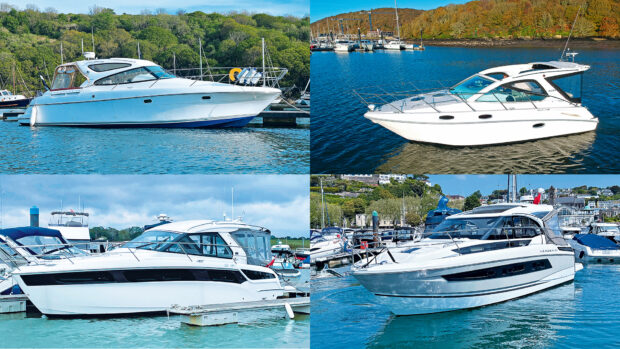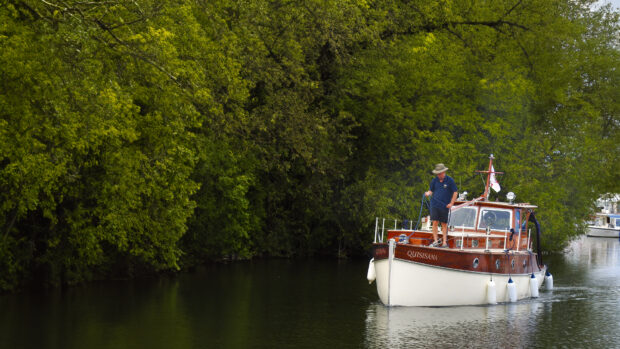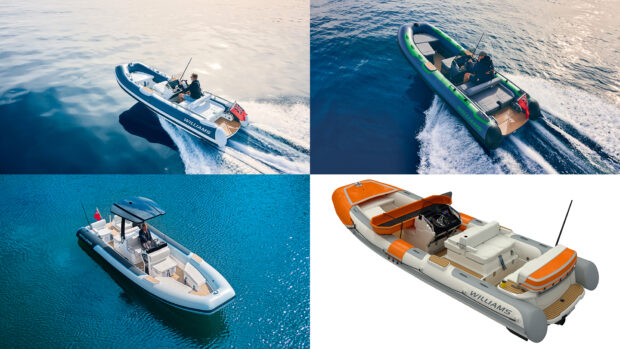Taking diesel electric propulsion to a new level, Adler's 76 Suprema may just be too innovative for the yachting marketplace
In spite of all the swoopy curves, polka dots, colour-coordinated engine rooms or whatever else is en vogue this year, deep down, the boat market is a deeply conservative place.
True innovation is usually greeted with suspicion. Aluminium sterndrives? They’ll dissolve. Tender garage? Waste of space. Forward-facing pod drives? You, sir, are having a laugh. Acceptance takes a while. So in choosing the established studio of Nuvolari Lenard to design their 76 Suprema, Adler of Switzerland has played a clever hand.
At its debut during the 2017 Cannes show last September, the boat looked the part: edgy enough to be new and interesting but essentially recognisable as a big, luxurious, modern flybridge motor yacht which wouldn’t look out of place in your local marina. But what lies beneath wouldn’t look out of place at Lockheed’s Skunk Works.

Electric boats are not new, and diesel-electric propulsion is well understood. What’s new about the Adler is the sheer ambition driving its uniquely versatile hybrid system, which has taken years to develop.
Outwardly it looks fairly normal, although a lot of carbon fibre has gone into its construction, but it’s what lurks beneath that’s the real story.
In the engineroom, two blue asynchronous electric motors encasing the propeller shafts provide the first clue that there’s something a bit different going on. You will look in vain for generators, but hidden beneath the floor lies a huge and heavy bank of batteries along the centreline – apparently enough to run all services, including the air con, for about 17 hours.
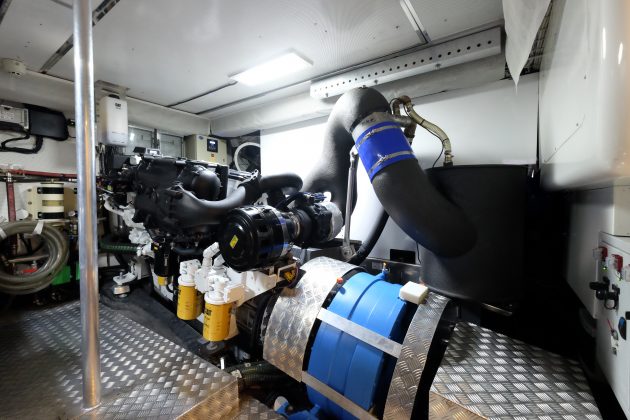
On battery power, the electric motors spin the prop shafts in forward or reverse. When the big diesel engines kick in, they also act as generators to charge the batteries or power each other.
And as a true hybrid system, the diesels can also drive the shafts direct, through a conventional gearbox. A complex magnetic clutch is the key to the system’s versatility.
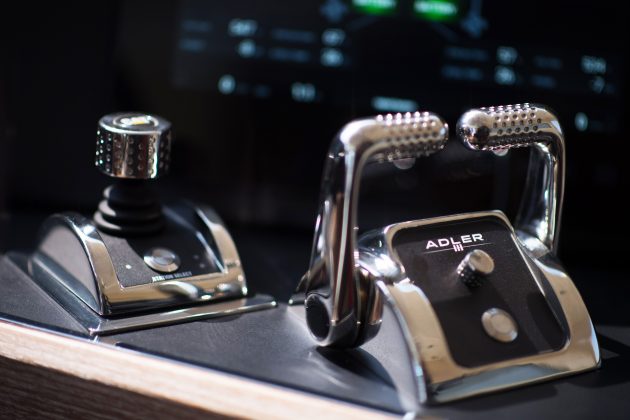
The helm also looks straightforward, but the Adler engineers would like you to forget the word ‘throttle’ and think in terms of ‘demand’. Push the levers forward to make a request for power or speed, and the boat’s formidable array of technology will do its best to comply, using battery power, diesel power or a combination of both. The graphic display on the screen tells
you what’s going on, but you can let the boat do all the thinking for you.

Moving slowly out of harbour in complete silence amid the usual boat show crowds, the Adler’s helm graphics confirmed we were running on just the two electric motors, each putting out 20kW, for a speed of just under 6 knots.
On reaching open water, we pushed the ‘demand levers’ forward a little. As speed increased, the graphics indicated that the port diesel had started up and was driving the port shaft. At the same time, the port electric motor was now operating as a generator and supplying power to the starboard electric motor, which was still driving the starboard shaft. This is what Adler’s engineers call ‘hybrid mode’ – diesel and electric power working intelligently together for economical and quiet cruising.
As we made further demands, the system responded elegantly. Without the graphics, we wouldn’t have known when the second diesel started up, nor when we were using both diesel and electric to plane at 15 knots, nor even the moment when the diesels took over completely to power the yacht to its top speed of over 26 knots. It was seamless, and equally impressive as we slowed down, going first into hybrid mode, then to pure electric as we returned to harbour.
This complex technological seamlessness is the cleverest thing about the Adler. The next cleverest thing is that unless someone told you, there would be no way to know just how clever it is.

We hesitate to compare it to a Toyota Prius but it really is just as simple to drive.
Crucially, it also stacks up as a practical yet luxurious motor yacht There’s a huge flybridge, the saloon has opening side sections and there’s a galley behind the wheelhouse.
Although the engine room is dead amidships, the full-width master cabin still looks grand and imposing, while the forecabin has converting scissor-action berths. Arrangements aft are slightly unorthodox. A VIP suite occupies the lion’s share of the
stern, with big windows, a generous double bed and 6ft 8in (2.03m) of headroom. Unusually, it shares the aft companionway with the twin- bunk crew cabin, which lies between the VIP and the machinery space.
Whether it’s just too innovative for the conservative yachting marketplace remains to be seen. But there is one thing I could get
used to – ghosting in and out of harbour in smoke-free silence.
Hugo’s take:
As Tesla has proved, the secret of selling environmentally friendly technology is to make it sexy as well as efficient. The Adler Suprema makes a good stab at that, even if the price is pushing on.
At a glance…
LOA: 75ft 10in (23.11m)
Beam: 19ft 10in (6.04m)
Displacement: 49 tonnes dry
Engines (diesel): 2 x 1,150hp Caterpillar C18 ACERT
Motors (electric): 2 x 100kW
Battery capacity: 170kWh
Fuel capacity: 1,144 gal (5,200l)
Water capacity: 194 gal (880l)
Price: from €3.2 million ex VAT (approx £3.4 million inc VAT)
Contact: Adler Yacht

Motor boat stabilisers: DMS’s new stabilisation fins
DMS's new flapping fins could become a staple for motor boats
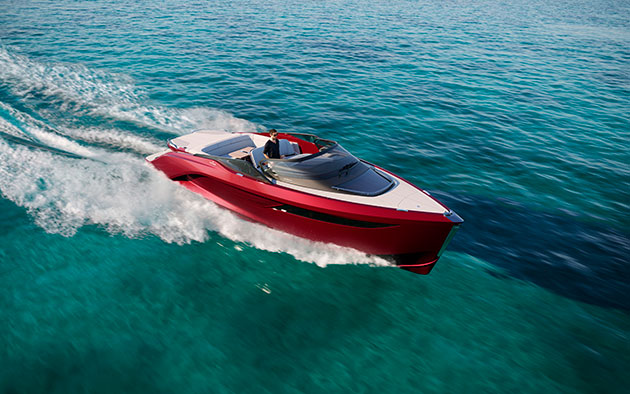
The new Brit Pack: Princess R35 design revealed
The final look of the 50-knot, active foiling Princess R35's Pininfarina design can now be unveiled

The new Brit Pack: Hunton 55
With an estimated speed 55-60 knots, sleek design and plenty of comfort and space, the Hunton 55 could compete with





